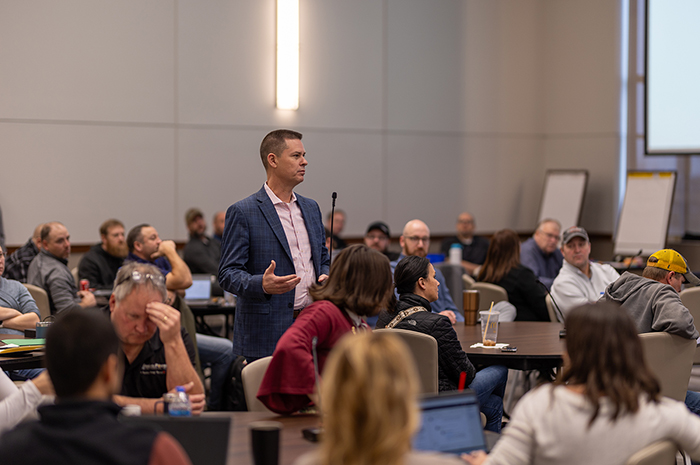Minnkota receives DOE grant for Project Tundra
Minnkota has received $9.8 million in federal grant funding to move forward on a Project Tundra design study.
Minnkota Power Cooperative is ready to take the next step forward with Project Tundra thanks to grant funding provided by the U.S. Department of Energy (DOE).
The North Dakota-based cooperative received $9.8 million from the DOE, which then provided access to $15 million from the state of North Dakota’s Lignite Research Fund. The funding will be used to conduct a Front-End Engineering Design (FEED) study on Project Tundra’s proposed carbon capture system at the Milton R. Young Station near Center, N.D.
“Project Tundra is a unique opportunity for North Dakota to lead the world in the advancement of carbon capture technologies,” said Mac McLennan, Minnkota President & CEO. “This Department of Energy grant will assist us in completing advanced research and engineering design on the project – one of the final steps before deciding whether to move forward and begin construction.”
The vision for Project Tundra is to equip Unit 2 at the coal-based Milton R. Young Station with technologies that will capture more than 90% of the CO2 emissions. The CO2 would then be permanently stored in a deep geologic formation more than a mile underground. The FEED study will support advanced design work, engineering and evaluation of project economics.
U.S. Sen. John Hoeven was instrumental in helping to prioritize the funding opportunity within the federal budget. Furthermore, Hoeven brought DOE leaders to Grand Forks on Aug. 20 to learn more about efforts in the state to advance carbon capture technology development.
“North Dakota is leading the way in developing carbon capture, utilization and storage (CCUS) technologies and these funds will help to advance these efforts, including enabling the completion Project Tundra’s engineering and design study,” Hoeven said. “Completion of this study will enable the implementation of the technology at the Milton R. Young Station, allowing more than 90 percent of CO2 emissions to be captured from the station’s Unit 2 generator. Developing and deploying this technology is a win both for consumers, who will continue to have access to affordable energy, and for environmental stewardship.”
In addition to research on the CO2 capture system, Minnkota is also conducting significant research on deep geologic storage of CO2 near the Young Station. In September and October 2019, a geophysical survey will be completed near Center, N.D., to gather valuable information about rock layers in the deep subsurface. Minnkota engaged with landowners, local leaders and received state permits prior to beginning this research.
Project Tundra is estimated to cost approximately $1 billion. The project is currently seeking financial partners to help utilize existing 45Q federal tax credits, which are currently $50 per ton of CO2 that is captured and stored in a geologic formation deep underground.
To learn more about Project Tundra, visit ProjectTundraND.com.
...



